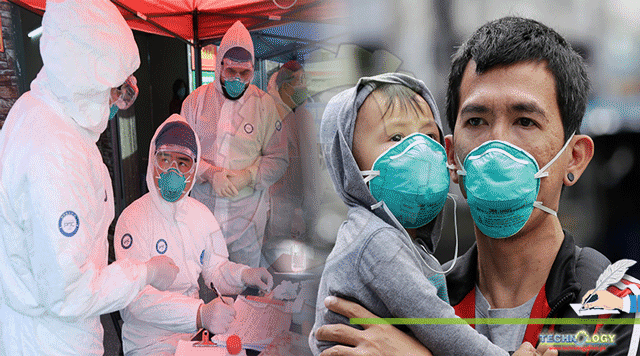SARS Is A Respiratory Illness That Emerged In Southern China In 2002 And Quickly Spread To Other Countries.

Coronavirus is the global pandemic that caused “shelter in place” warnings across the world. A coronavirus is a group of infections that affect both people and animals and ranges from the common cold to significant respiratory distress and kidney failure. This article will discuss the history and symptoms of the Novel Coronavirus.
The history of the novel coronavirus
The coronavirus pandemic of 2019 (COVID-19) is caused by severe acute respiratory syndrome coronavirus 2 (SARS-CoV-2). That’s a whole mouthful of words to mean that indicates that it is a virus in the coronavirus family that causes significant and acute respiratory distress.
What’s the coronavirus?
Scientists first discovered the human coronavirus in 1965 after causing the common cold. Researchers named the viral group after their crown-like appearances. Seven of these coronaviruses are infectious to humans, while others are transferable to animals. COVID-19 is not the first coronavirus to spread, other well-known coronaviruses to hit the news include SARS and MERS.
What is Severe Acute Respiratory Syndrome (SARS)?
SARS Is A Respiratory Illness That Emerged In Southern China In 2002 And Quickly Spread To Other Countries. After Its Spread, 8000 People Were Infected Across 28 Countries And 774 Died.
What is Middle East Respiratory Syndrome (MERS)?
MERS started in Saudia Arabia in 2012 and affected those who lived in or traveled to the Middle East. Of the 2,500 cases, 858 people died. While MERS was found to be less contagious than SARS, it was more deadly. MERS caused respiratory symptoms in addition to kidney failure.
Where did COVID-19 originate?
Clinicians first identified the disease in Wuhan, Hubei, China, in December of 2019. Scientists believe that the origin and the evolution of COVID-19 stem from SARS-like sequences that isolated in bats. Initially, the bat viruses were collected in Zhoushan in the Zhejiang Province of China between 2015 and 2017.
Because COVID-19 was first diagnosed in stallholders from the South China Seafood Market in Wuhan, it most likely came from intermediary hosts like the pangolin (source). The Seafood Markets also have live wild animals that are killed on the spot. The close and possibly unsanitary quarters allowed the viruses to swap hosts and possibly mutate into a form that began to infect humans. However, there were no bats at the Wuhan Market. Yet, the disease continued to spread from person to person.
On January 21, 2020, the first confirmed case occurred in the United States. A man in his thirties who lived in Washington and had recently traveled to Wuhan. While the United States was beginning to fear for public health, other countries like Japan, Thailand, Italy, and South Korea also reported cases. On January 30, 2020, the World Health Organization called the novel coronavirus a global pandemic (source). In fact, the novel coronavirus didn’t officially become COVID-19 until February 11, 2020.
At the end of February, states across the United States were reporting community transmission. COVID-19 was no longer limited to those with known ill contacts or people who had traveled outside of the country. In March of 2020, government agencies began to respond with recommendations to limit gatherings, social distance, and shelter in place (source). With further testing, the United States determined that deaths and COVID-19 infections started earlier than previously determined. As the global pandemic is at the forefront of life, it is crucial to understand the nature of the disease.
Why is COVID-19 concerning?
The virus that causes COVID-19 spreads from person to person by respiratory droplets expelled when a sick person coughs or sneezes. These droplets can land in the mouth or nose of those nearby (about six feet). COVID-19 rapidly spreads due to its contagious nature. While social distancing and the use of cloth masks have been used as techniques to stem the spread, the disease continues to be transmitted from person to person.
Another concern is the presentation of symptoms. For some people, their oxygen levels can be very low but they seem to breathe reasonably normally. With these abnormal presentations, it can be challenging to treat patients properly or know how sick they are (source). The other concern is that there is still so much unknown regarding this new coronavirus. Those that the immunocompromised or those with other health conditions are more likely to die from this disease.
Another concerning aspect of the disease is the ‘pediatric multi-system inflammatory syndrome’. Children experience a condition that is related to COVID-19 that acts like a Kawasaki or Toxic Shock Syndrome infection and can result in death (source). Kawasaki disease is a rare but serious syndrome that children experience following a viral infection that can result in death.
While it can be easy to struggle with fear and sadness when facing the unknown of this disease, it is important to focus on what you can do. Wash your hands, don’t touch your face, and stay home if you feel sick. If you are going out, practice social distancing and limit your trips. Remaining positive and connected during this time is one of the best weapons we have to promote mental health. The CDC released a list of what we can do to protect our physical health.
